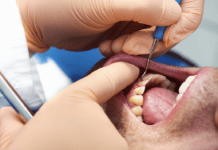The one thing I wished I had learned in hygiene school was how to understand current dental terminology (CDT) codes better. However, this wasn’t even mentioned in passing in my program.
I understand these codes and insurance should not in any way dictate treatment recommendations; however, understanding these codes and their limitations helps to have conversations with patients regarding the recommended treatment. I do want to preface this article with a clear call to action to never let insurance coverage dictate what treatment you provide or recommend.
With that said, I want to review some CDT codes that you are likely not utilizing that may help your patients in the event their insurance covers the procedure. Even if the procedure is not covered, we should report what we do to the insurance company.
Even though some hygiene programs do not teach anything about coding or the CDT codes, we all learn the basics very quickly: D1110 (prophy), D0274 (4 bitewings), D4346 (scaling in the presence of gingival inflammation), D4341 (periodontal scaling 4+ teeth), and so on.
In some instances, we hit a wall when trying to figure out what code to use for some adjunct services. Not only is this an issue for new hygienists, but it can also be an issue for seasoned hygienists as well. I had the privilege and honor of working with an office manager who spent more time than she should have, showing me the ropes regarding CDT codes. She was brilliant, and I gained so much knowledge from her. I have to give her credit here for all the info I’m going to share with you.
D0180: Comprehensive Periodontal Evaluation – New or Established Patient
Many of you may be familiar with this code and currently use it. However, in my experience, this is a very underutilized code that should be used more often. This code cannot be used in conjunction with other oral evaluation codes such as D0150 (comprehensive evaluation) and D0120 (periodic oral evaluation).
The D0180 CDT code requires “complete periodontal charting,” which includes but is not necessarily limited to six-points-per-tooth pocket depths, recession, mobility, bleeding points, purulent discharge, attachment loss, abfractions, wear facets, and periodontal diagnosis.1
This code can be reported by general dentists; it is not exclusive to periodontists, which some dental professionals assume. The criteria to use this code is that the patient presents with signs, symptoms, and/or risk factors for periodontal disease: patients with a family or personal history of periodontal disease, type 2 diabetes, cardiovascular disease, hypertension, rheumatoid arthritis, smokers, etc.
As you can imagine, many of your patients will fit this criterion. You should include the signs and symptoms in your periodontal evaluation notes in the patient’s chart.
If the patient’s insurance does provide coverage for this evaluation, there may be limitations. Limitations may include reimbursement every 12 or 24 months, three to five years, or once a lifetime. Again, I would not let this be the deciding factor for the evaluation I provide my patient.
As you have a conversation with your patient regarding their care and the reimbursement they can expect from their insurance company, it is good information to have. This code can be reported on the same service date as periodontal maintenance therapy (D4910), prophy (D1110), and D4341/D4342 (periodontal scaling). D0180 cannot be billed at the same time as D4355 (full mouth debridement) as the very purpose of a full mouth debridement is to remove debris that prevents a comprehensive exam. In some cases, the insurance company may down-code the D0180 to reimburse for a D0120 (periodic oral evaluation).
D0171: Re-evaluation, Post-operative Office Visit
This code can be utilized when patients return after nonsurgical periodontal therapy, four to six weeks for postoperative re-evaluation. Many hygienists like to follow up after nonsurgical periodontal therapy (NSPT) with a four to six-week re-evaluation; this is the code to use for that visit. This is also a code that could be used for follow-up after D4346 (scaling in the presence of gingival inflammation) if you would like to do a re-evaluation.2
Limitations regarding this code are that if insurance reimburses for D0171, it will likely count towards the frequency of other oral evaluations. This will likely mean that your patient will be responsible for their periodic oral evaluation (D0120) at some point during that year if the frequency is limited to twice a year.
D1354: Interim Caries Arresting Medicament Application – Per Tooth
The CDT code D1354 is most popular for the application of silver diamine fluoride. However, there are other medicaments that can be used that are included in this code description. You can also utilize this code when placing fluoride disks interproximally as a preventative for incipient interproximal lesions.
As a preventative care specialist, it pains me to make notes in patients’ charts that say “watch” any tooth or surface, especially when we have access to treatment modalities that allow us to arrest the decay and prevent further destruction of tooth surfaces. Therefore, I think it is very important to add this code to your armamentarium of codes to help prevent disease and/or stop the progression of the disease.
D1355: Caries Preventive Medicament Application – Per Tooth
Though the code description may sound like the D1354 code, there is a distinct difference in that the tooth must not have a carious lesion for the D1355 code to apply. D1355 is used to prevent carious lesions, not to halt the disease’s progress. The definition of this code is “for primary prevention or remineralization. Medicaments applied do not include topical fluorides.”4
This code is used per tooth and for areas determined to be high risk for caries development, such as exposed root surfaces. Since fluoride of all types is excluded when using this code (gels, foams, and varnishes), the proper choice of medicament would be silver diamine fluoride, silver nitrate, thymol-CHX varnish, and/or topical povidone-iodine.
When deciding which code is most appropriate, consider the area you are concerned with. Is there an incipient or carious lesion? If the answer is yes, CDT code D1354 is most appropriate. Is the area of concern due to exposed root surfaces that have yet to have any carious lesion? In that case, the CDT code should be D1355. In short, if there is any type of carious lesion, the most appropriate code and treatment would fall under the D1354 code. If there is no lesion, but the area has an increased risk of one developing, the most appropriate code would be D1355.
D9910: Application of Desensitizing Medicament
The CDT code D9910 can be used for the application of fluoride varnish, use of TENS units to control pain, and pastes applied in-office designed for desensitization. This code is meant to encompass the entire mouth, as reported by visit.5
For instance, if you have a patient with generalized root sensitivity due to recession, this code would be an option to use for the application of fluoride varnish as a desensitizing agent. This could also be used post-whitening treatment for patients with sensitivity after treatment or generalized sensitivity due to attrition, abrasion, and/or erosion.
Reporting this code to the insurance company requires a narrative and/or descriptive documentation. Save yourself some time and headache and submit it initially rather than needing to appeal a claim due to not including proper documentation/narrative.
D9911: Application of Desensitizing Resin for Cervical and/or Root Surface – Per Tooth
The CDT code D9911 is used for the application of desensitizing resins for cervical and/or root surfaces per tooth, not per visit. This means a tooth number will be required when reporting the procedure to the insurance company.6
There is a plethora of products that can be used with this code. The product simply needs to be a desensitizing resin. This does not mean it needs to be a composite resin, as that would be defined under a completely different CDT code. However, this would be an appropriate code to use when a desensitizing resin is placed adjacent to a class V composite resin because a patient is experiencing sensitivity.
This code is not meant to be used as a code for bases and liners under a composite resin. This code will also require a narrative or descriptive documentation that includes the tooth number and the reason for the application.
Conclusion
Understanding CDT codes can be a difficult task, especially when many hygienists have little experience, understanding, and/or education on the topic. However, a better understanding of the relevance and benefits of properly using CDT codes will benefit your patients and your practice. This is just a snippet of the codes hygienists can utilize to better serve their patients. I encourage you to take a CE course on CDT codes aimed at dental hygienists and not dentists, as the codes dentists would utilize are likely much different than those of hygienists.
Before you leave, check out the Today’s RDH self-study CE courses. All courses are peer-reviewed and non-sponsored to focus solely on high-quality education. Click here now.
Listen to the Today’s RDH Dental Hygiene Podcast Below:
References
- D0180 Comprehensive Periodontal Evaluation- New or Established Patient. (2021). Practice Booster. https://practicebooster.com/codepreview.asp?id=478
- CDT 2015 Dental Procedure Codes. (2015). American Dental Association. https://aavainternational.com/wp-content/uploads/2020/12/cdt_2015_dental_procedure_codes.pdf
- D1354 – ADA Guide to Reporting Interim Caries Arresting Medicament Application. (2017, July 17). American Dental Association. https://www.mouthhealthy.org/~/media/ADA/Publications/Files/D1354_ADAGuidetoReportingInterimCariesArrestingMedicamentApplication_v1_2017Jul15.pdf
- D1355 – ADA Guide to Reporting Caries Preventive Medicament Application. (2021, September 1). American Dental Association. https://www.ada.org/-/media/project/ada-organization/ada/ada-org/files/publications/cdt/d1355_adaguidetoreportingcariespreventivemedicamentapplication_2021aug.pdf
- ICD and CDT Coding Examples. (n.d.). American Dental Association. https://www.ada.org/publications/cdt/icd-and-cdt-codes
- ADA Guide to Dental Procedures Reported with Area of the Oral Cavity or Tooth Anatomy (or Both). (2022, January 1). American Dental Association. https://www.ada.org/-/media/project/ada-organization/ada/ada-org/files/publications/cdt/areaoftheoralcavityandtoothanatomybycdtcode_2022jan.pdf











